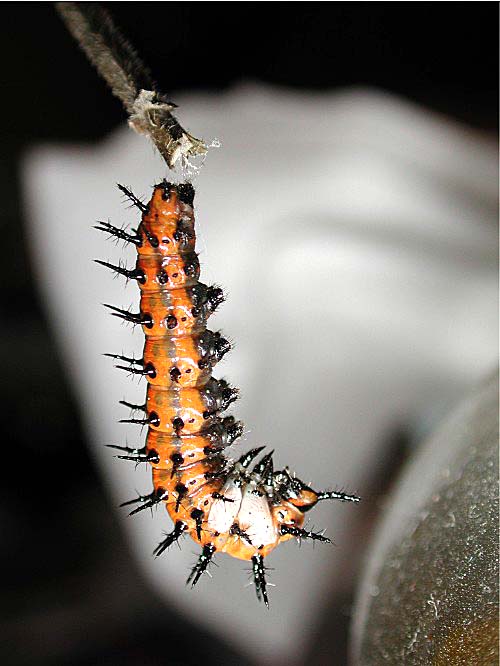| When you find eggs or
caterpillars, you can snip off a bit of the plant that they are on, and
put it in a jar. Here we use a big mayonaise jar from the school
cafeteria. You can put the lid on it for long enough to go home with
it, but then replace the lid with a paper towel or tissue, so the
animals can breathe. If you have eggs or very young caterpillars, you
may have to get more plant material in a few days, because they won't
want to eat dried-up plant leaves.
If your caterpillar is eating well, you will soon see a lot of green
pellets in the bottom of the jar. This is the caterpillar's "droppings"
Somtimes you can find caterpillars on plants, even if they have
camouflage coloring, by looking for droppings underneath them.
|

Image
Copyright 2002, David L. Green
Unauthorized use prohibited
|

